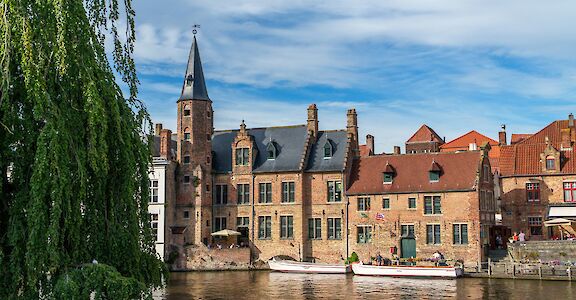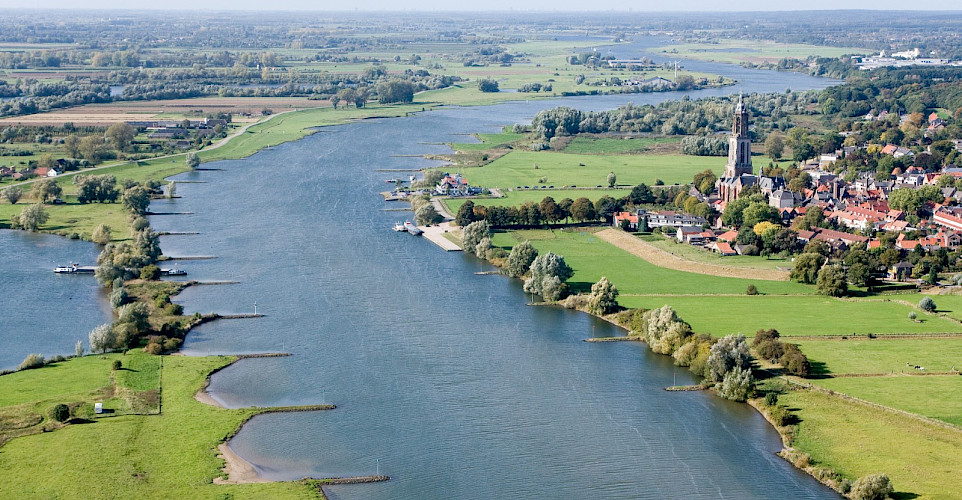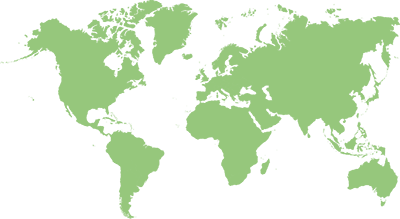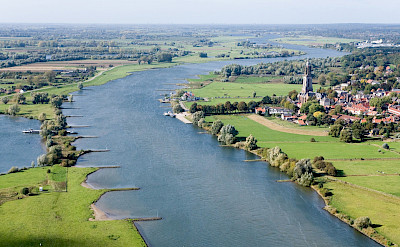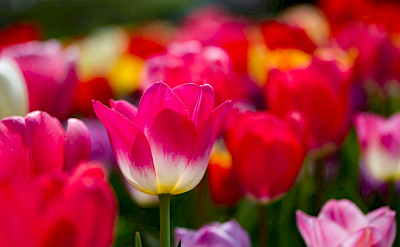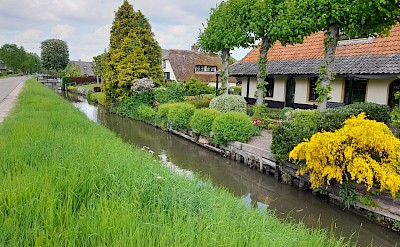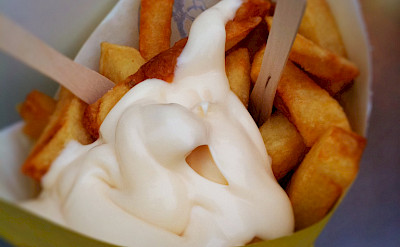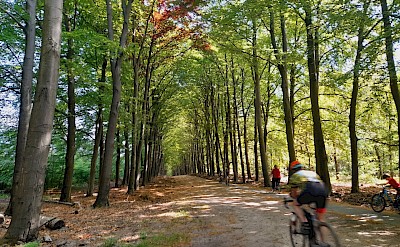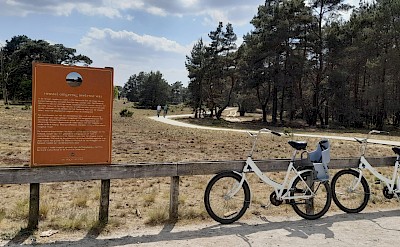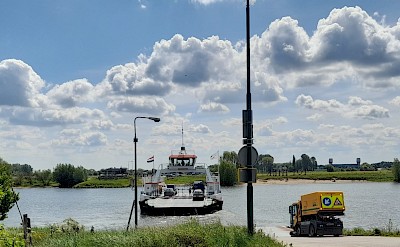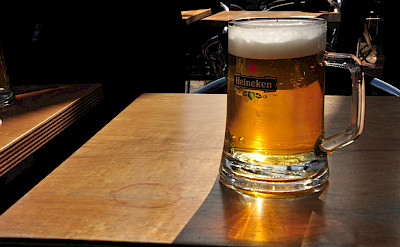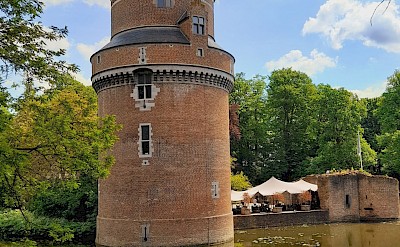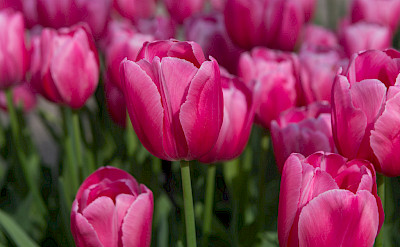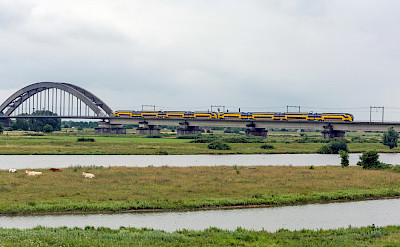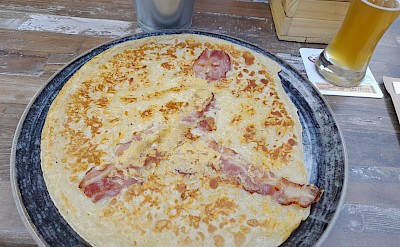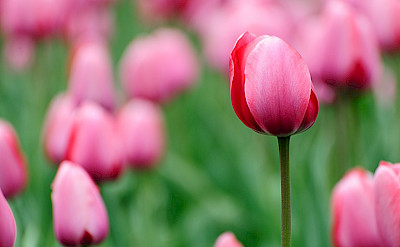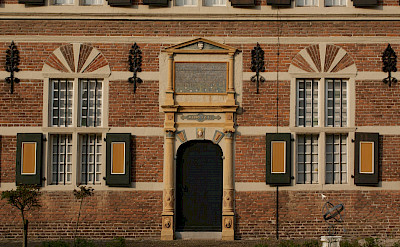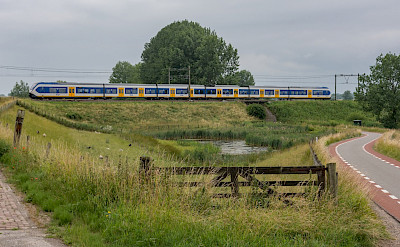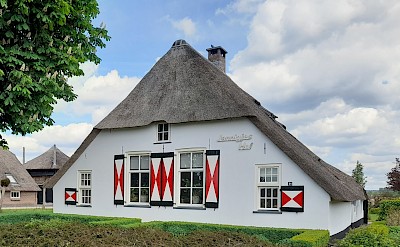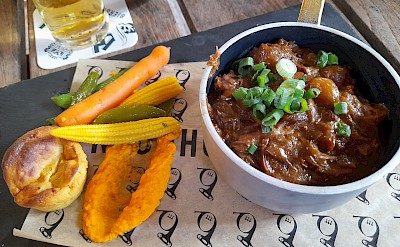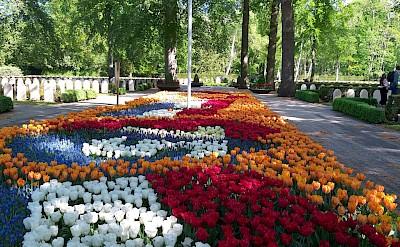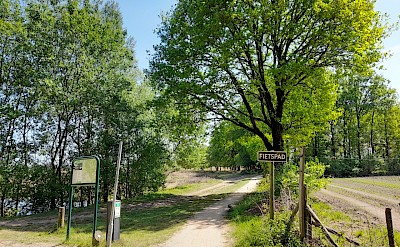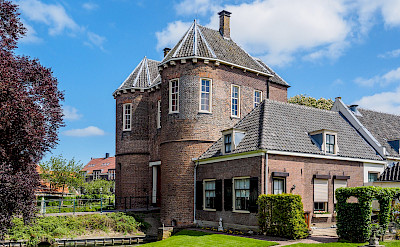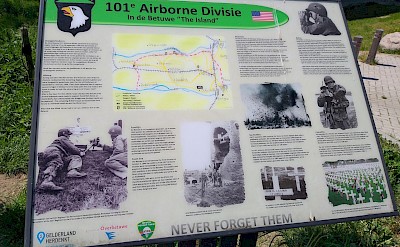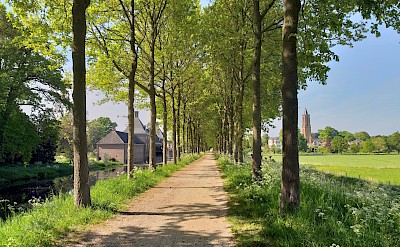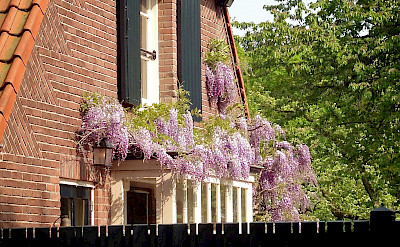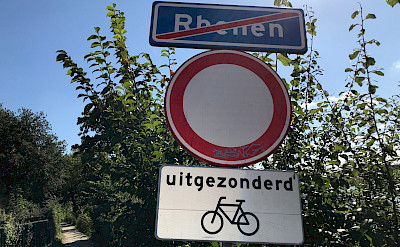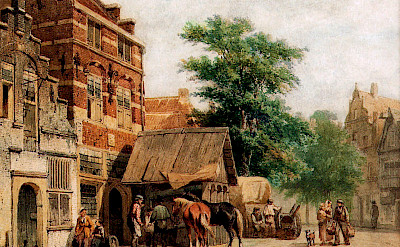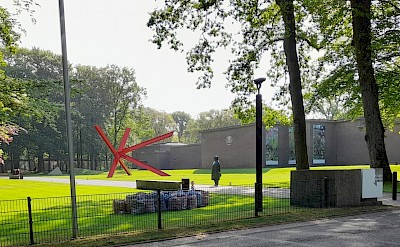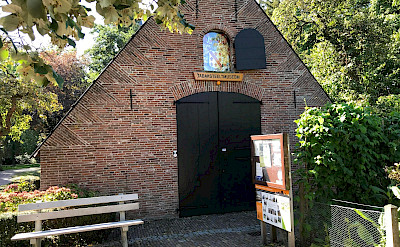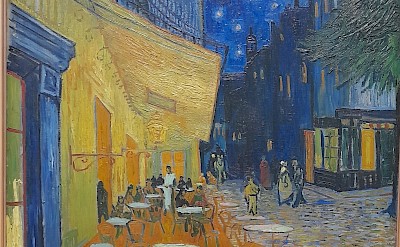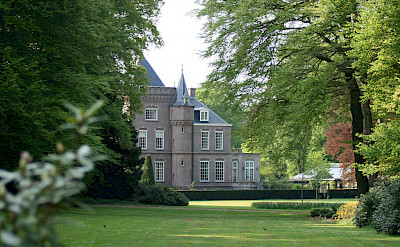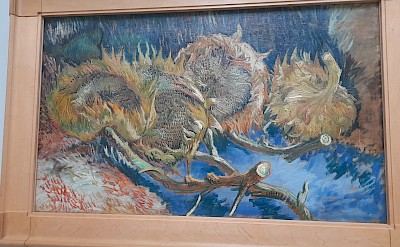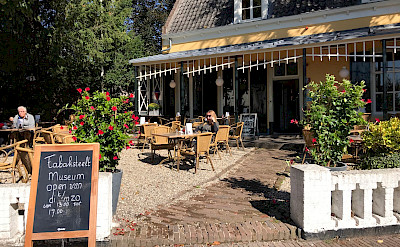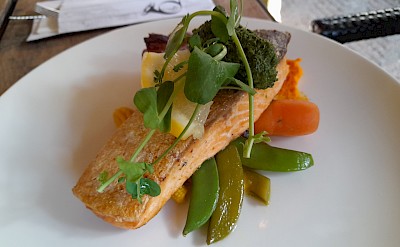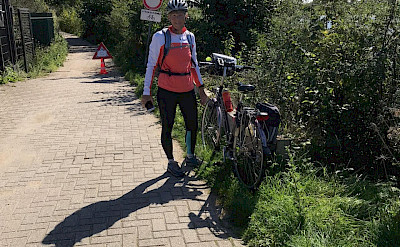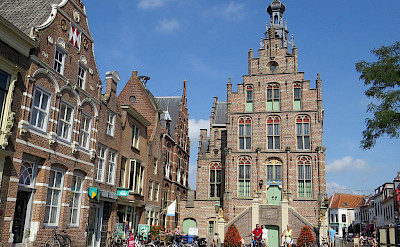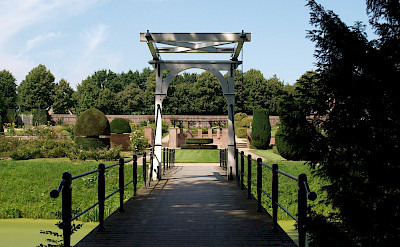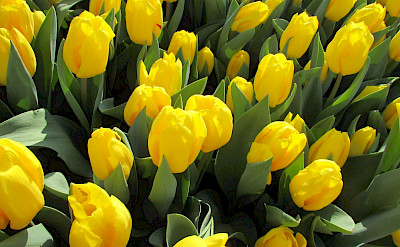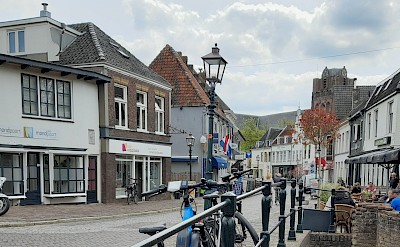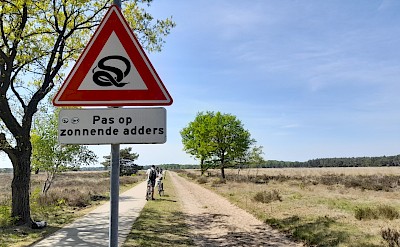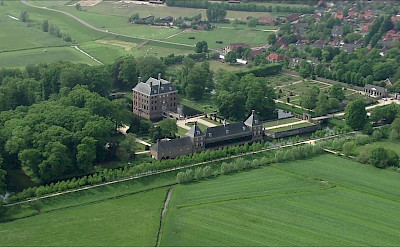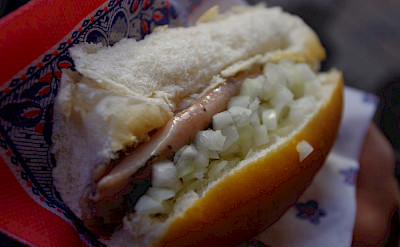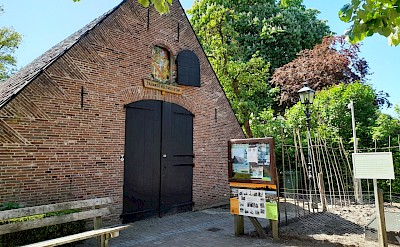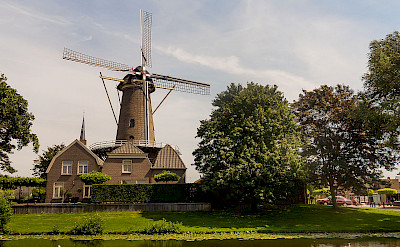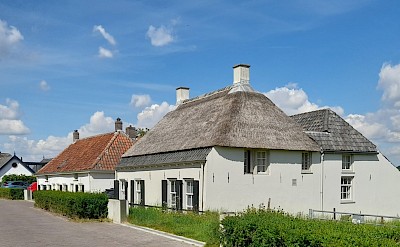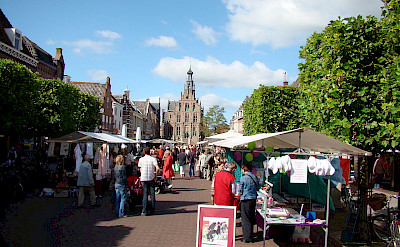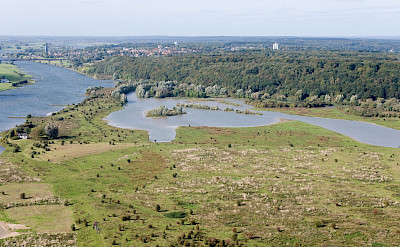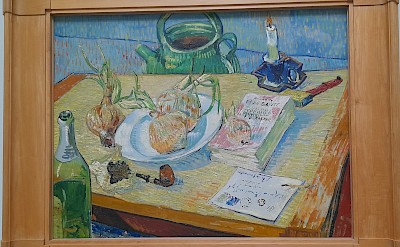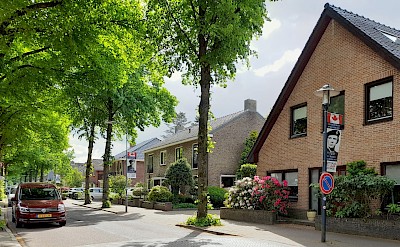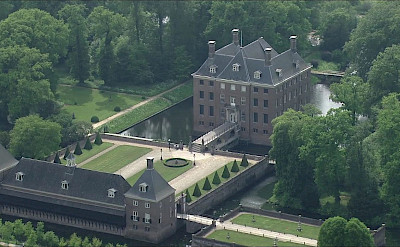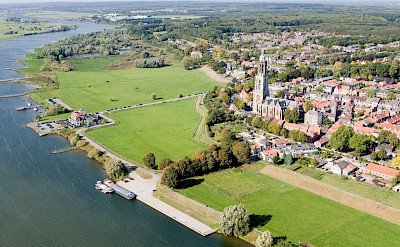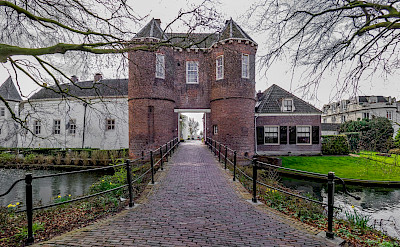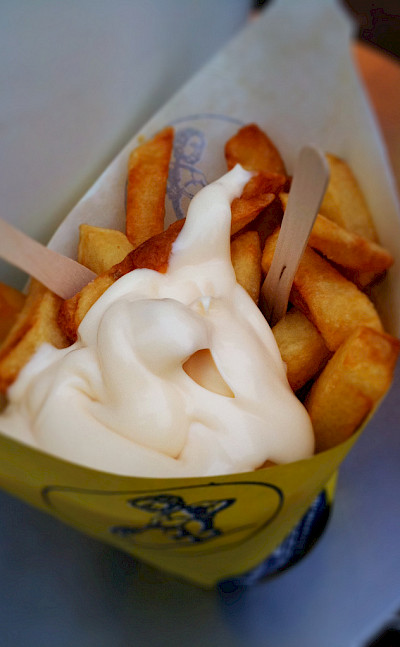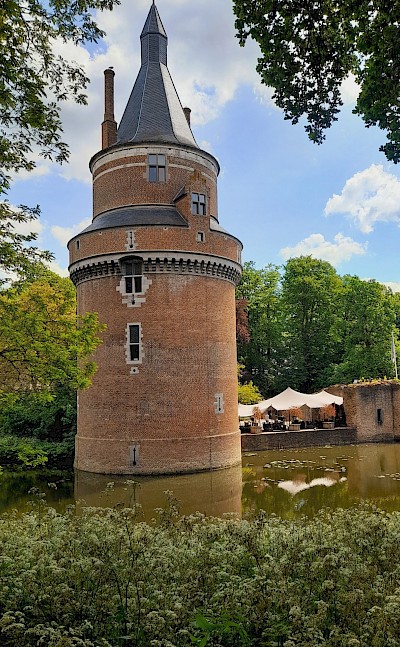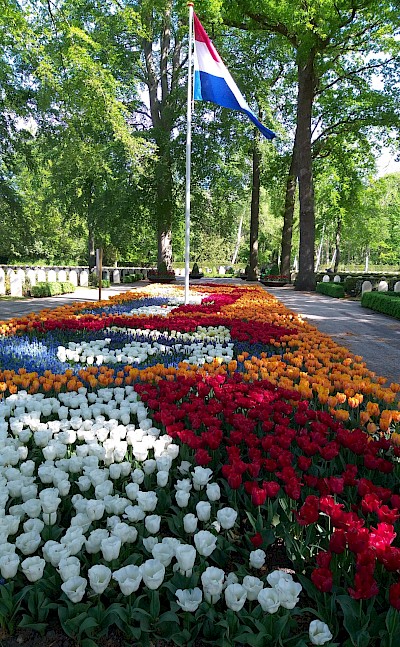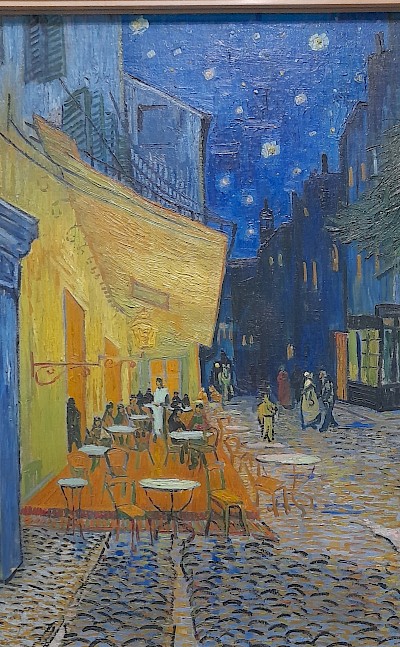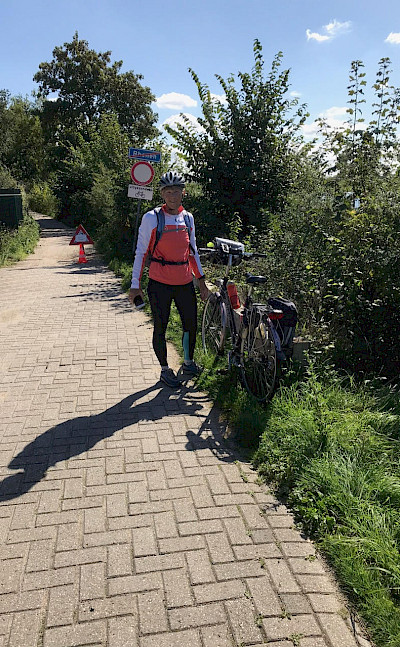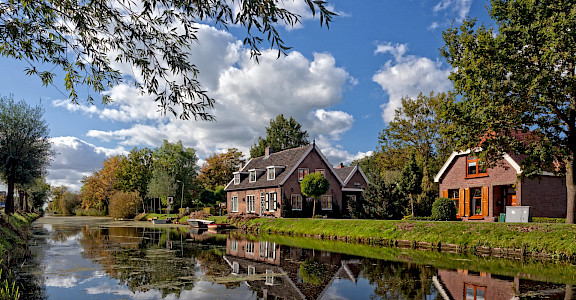Holland - Past & Present
Netherlands Bike Tours
Cycling & Discovering Authentic & Historic Holland
-
Tour Type
-
Skill Level
-
Length7 days
-
Prices from€1119 Rates
-
Overview
Who could offer a better bike tour experience in Holland than Tripsite? Welcome to our home!
As you pedal through the Holland of today, with one of the best cycling infrastructures in the world, the echoes of Holland's wartime past will unfold before you. You will cycle two days (or more if you prefer) with our local guide and learn WWII history from the Dutch perspective, deepening and broadening your understanding of a continent's struggle against tyranny.
You will be based in the village of Amerongen at the eclectic Napolean Schuur next to the entrance of the National Park Utrechtse Heuvelrug, nestled in the foreland of the Rhine River.
The scenery on this tour alternates between riverscapes, polders, farmland, and forests. Castles, mainly privately owned, dot the landscape, and history abounds.
We feel that this tour has something for everyone. History enthusiasts, be sure to pay attention. Cyclists who are passionate about biking, take note. Nature admirers and bird enthusiasts, this is for you. And for those who have a deep affection for all things Dutch, keep this in mind. From the moment you arrive in Holland to the time you depart, this is an authentic and historically significant Dutch experience.
Highlights
- Incredible Dutch cycling infrastructure
- Castles
- WWII History
- Rhenen, Buren, and Culemborg
- Grebbe Water line remnants and history
- Dutch landscape
This tour can be combined with a hotel-based tour in Oosterbeek for a complete WW II experience. Please take a look at our World War II Reflections tour!
See a complete list of our bike tours in the Netherlands.
-
Itinerary
Day 1: Amerongen
Day 2: WW2 Route (51 km)
Day 3: Wageningen Route (42 km)
Day 4: Rhine Route (38 km)
Day 5: Buren Culemborg Route (53 km)
Day 6: Castle Route (35 km)
Day 7: DepartureAll distances are approximate. Due to unforeseen circumstances such as weather conditions or provisions issued by local authorities, the itinerary may be subject to some changes before and/or during your holiday. For example, along the route, you may find temporary deviations/detours necessary due to roadwork that will not be reflected on your maps or route descriptions. In this case, please follow the directions posted locally.
Day 1: Amerongen
Arrive and settle into your accommodations at the Napoleon Schuur, located in the historic center of Amerongen. Plan on strolling this quaint village and visiting the Amerongen Castle here. Hours are 11 - 5.Day 2: WWII, 32 mi. (51 km)
This route mainly covers an area where heavy battles were fought at the beginning of WWII. You will cycle near the "water line", an area the Dutch had flooded to stop the Germans. History tells the story. The "Hollandic Water Line" was a Dutch defense tactic used for centuries. First conceived in 1629, it was constructed and revamped throughout history. The Dutch realized that flooding low-lying areas formed an excellent defense against enemy troops. Earth and brick fortifications were added throughout the years.At the advent of WWII, this line of defense was simply too vulnerable to modern artillery and bombs to withstand a protracted siege and efforts began to prepare a new water line, the Grebbe Water Line.
Both water lines failed to hold back the German forces. Hitler thought that Holland would fall in a day, but the struggle lasted five. Holland was forced into surrender by the aerial bombing of Rotterdam, and the threat of the same for Utrecht and Amsterdam.
Also on this day, you will visit a modern-day farm in Holland, getting a taste of the Holland of today. The farm is an example of precision agriculture that uses robots and computerized programs to optimize production. You will enjoy a tour of the farm.
Highlights:
- Museum Grebbelinie
- Museumbunker
Day 3: Wageningen Route, 26 mi. (42 km)
The theme of Holland of yesterday is continued as your guide expands further on the history of the area. You will also explore more of the Holland of today. Amerongen, where you will be based, is a little paradise of tranquility, tucked away in a pristine national reserve. You will be cycling on a wonderful cycling network, through small cities, towns, and bergs. There are cyclists everywhere living everyday life-commuting to school, tending gardens, shopping, and enjoying coffee in the bustling squares It is a very peaceful and safe environment. This is the other Holland, apart from Amsterdam, this is authentic Holland.
Wageningen stands distinguished for its internationally acclaimed agricultural university and holds a significant position within the "food valley," a thriving global hub of culinary innovation. This dynamic ecosystem encompasses over 1,510 international food enterprises and 20 dedicated research institutions. Notably, Wageningen University & Research (WUR) secured its position as the premier global institution for agricultural sciences, a recognition bestowed by U.S. News & World Report in 2016.On the agenda as well is Rhenen, where the German troops broke through the Dutch defense during WWII in May 1940. In 1945, the town was damaged again during the liberation of the country from German occupation. Many or all of the Dutch soldiers who were killed by the Germans near Rhenen lie buried in the Cemetery of Honor.
Other museums and points of interest in Wageningen:
- Soil museum
- Belmont Arboretum
- Het Depot (Sculptures Gallery)
- Cunera Church, built between 1492 - 1531
Day 4: Rhine Route, 24 mi. (38 km)
You cycle predominantly through the Betuwe, a region renowned for its historical, geographical, and agricultural significance. Nestled within the delta shaped by the Rhine and Meuse Rivers, this highly fertile area boasts bountiful fruit orchards and fertile soil. It serves as a prime illustration of Dutch agri-food cooperation, earning its place as a notable food valley. In the waning months of World War II, the region earned the monikers "Men's Island" or "Manneneiland" as the evacuation of its civilian populace during Operation Market Garden left behind only soldiers.Highlights:
- Castle Duurstede,
- Windmill Rijn en Lek
- Museum Dorestad
Day 5: Buren Culemborg Route, 32 mi. (53 km)
Most of this route meanders atop the dike that follows the course of the River Rhine, traversing historic towns along its path. Notably, two of these towns, Buren and Culemborg, exude an ambiance where time appears to have been frozen. Among the attractions in Buren is a museum named "Buren en Oranje," dedicated to the town's connection with the Royal Dutch family, famously known as "the House of Orange."Highlights:
- Marechaussee Museum
- Oranje Museum
- Elisabeth Weeshuis Museum
- Elvis Presley Museum
- Museum Jan van Riebeeckhuis
Day 6: Castle Route (35 km)
Nowhere else in the Netherlands can you encounter such an abundance of castles as in the region north of the Rhine River. A significant number of these castles continue to serve as residences for the noble families and their descendants. The farmsteads integrated within the castle estates are distinguishable by their uniquely colored shutters, each family adorning their buildings with their distinct hues. Additionally, segments of this very region fall within the boundaries of three distinct government-managed nature reserves, each imposing stringent regulations on land utilization.Highlights:
- Museum Huis Doorn
- Von Gimborn Arboretum
Day 7: Departure
These routes can be done in any order.
If you are interested in a 100% WWII-themed tour, you can combine this tour and your stay in Amerongen with a stay in Osterbeek. Please take a look at our World War II Reflections tour! In this case, you can take a taxi or be transferred to Oosterbeek, the perfect base to continue your journey into history.
Looking for more? View all our featured bicycle tours, specials, and news, or look at our full list of bike tours in Europe.
-
Map
-
Accommodation
You will be accommodated in the boutique hotel, Napoleon Schuur, next to the entrance of the National Park Utrechtse Heuvelrug.
-
Inclusions
What’s Included
- Accommodation for 6 nights
- 6 breakfasts
- 7 days bike rental with handlebar bag, pannier, & repair kit with lock
- Guide included for two routes
- Farm tour
- Route descriptions & maps
- Tourist tax
What’s Not Included
- Lunches & dinners
- Beverages
- Gratuities for your guide
- Bike Protection
- Travel Insurance
-
Dates & Pricing
Dates & Pricing
Questions about dates or pricing? We’re here to help! Call 800-951-4384 to talk to a Tour Specialist now.
- Tour package 2025 Daily Apr 1–Oct 31 from € 11192025 departures: Daily Apr 1–Oct 31
2025 April Sun Mon Tue Wed Thu Fri Sat 2025 May Sun Mon Tue Wed Thu Fri Sat 2025 June Sun Mon Tue Wed Thu Fri Sat 2025 July Sun Mon Tue Wed Thu Fri Sat 2025 August Sun Mon Tue Wed Thu Fri Sat 2025 September Sun Mon Tue Wed Thu Fri Sat 2025 October Sun Mon Tue Wed Thu Fri Sat Tour package Double occupancy € 1119 Single occupancy On request Bike rental Price Electric bike Included Standard touring bike Discount € -105
Please Note
- Rates are per person, based on double occupancy
- Tour prices are based on the fuel costs at time prices are set, often months or years in advance. In rare cases, additional fees may apply for fuel cost increases.
- Information to read before you book
- We recommend purchasing trip insurance
- Please see our FAQ
- Tour package 2025 Daily Apr 1–Oct 31 from € 1119
-
Extra Info
Skill Level — Easy
This is an easy, partially guided, or totally guided (supplement applies) bike tour in which you stay in one hotel in the village of Amerongen. We have included the guide for the WWII themed routes, Route 1 and Route 2, but you can request our guide on any other or every remaining day. See pricing. Throughout this beautiful, relatively undiscovered part of Holland, you will cycle on the infamous and well maintained Dutch cycling network and quiet country roads. Entering and exiting any town is either done so on separate bike lanes or well-marked lanes.
Airport Info
Fly to Amsterdam Airport Schiphol (AMS)
Local Travel
From the airport, you can take an intercity train in the direction of Nijmegen. Exit train at Station Driebergen-Zeist. Travel time is approx. 47 minutes. From this station, you walk 3 minutes to the bus station and take local bus 50 from platform F in the direction of Wageningen. Travel time is approx. 27 minutes. Exit bus at Amerongse Berg in Amerongen. The hotel is a two-minute walk from the bus station. The total cost of the train plus bus is approx. €14.
Climate
The best time of year to enjoy this tour is spring, summer, or fall. The Netherlands has a temperate maritime climate influenced by the North Sea and the Atlantic Ocean, with cool summers and moderate winters. Always check local conditions before you travel.
Remarks
There is a wonderful castle in Amerongen that is well worth a visit. For centuries this property was the stage on which the turbulent lives of the nobility were played out and today this beautifully restored castle houses a museum. The castle is open Tuesday through Sunday, April 1 to October 31 from 11 am to 5 pm. It operates during the same hours, yet only from Thursdays through Sundays from November 1 to March 31. Guided tours are offered Tuesday through Friday starting every hour at noon and concluding at 6 pm. No guests will be allowed entry to the castle after 4 pm on open days.
Important to know
Travel Documents
It is each traveler's responsibility to ensure that you are in compliance with the country or countries you plan to visit. This includes and is not limited to passport validity, visa requirements and acquisition, blank passport pages required for your destination (s), etc.
US citizens: A good website to research the requirements of the Schengen Agreement and entry into other countries is travel.state.gov.
Non-EU and EU residents: Please research the requirements of your country of residence for international travel and your destination country or countries.
*Important note: Please check on the European Travel Information and Authorization System (ETIAS) status as once implemented, this will be required to visit any of the 26 Schengen-member countries for tourism, business, medical, or transit. This is an additional check on security rather than a visa.Tour Operator
This tour is run by Tripsite.
We value the strong relationship we have with our local partners and the services we provide.
We are not a broker.
We do not inflate tour prices.
We are simply travelers helping travelers.Would you like to learn more About Us? How about What Makes Us Different than other companies?
-
Photos
-
Reviews
Tripsite Customer Reviews
Nicholas C.
3 years ago
Verified Reviewer

